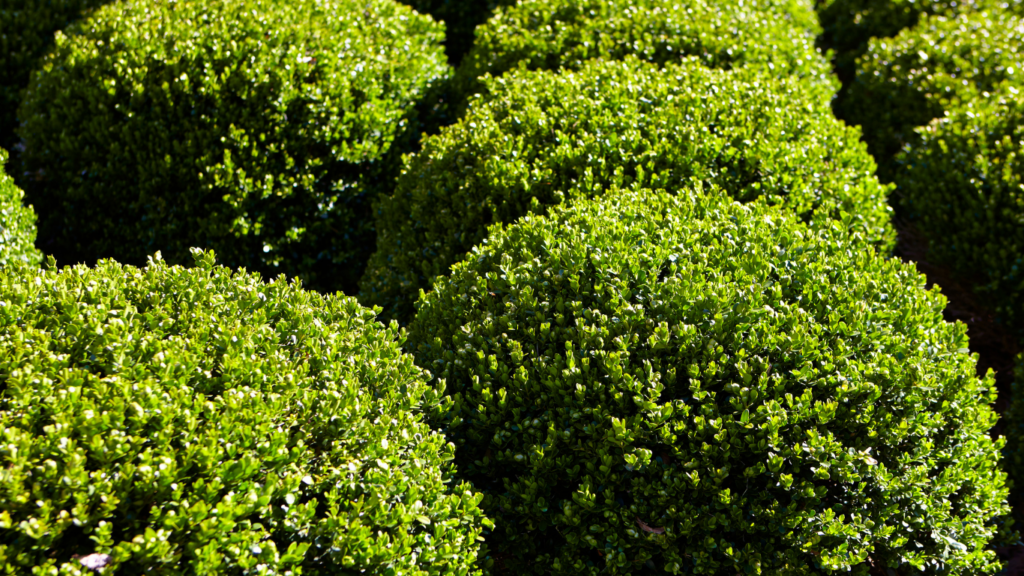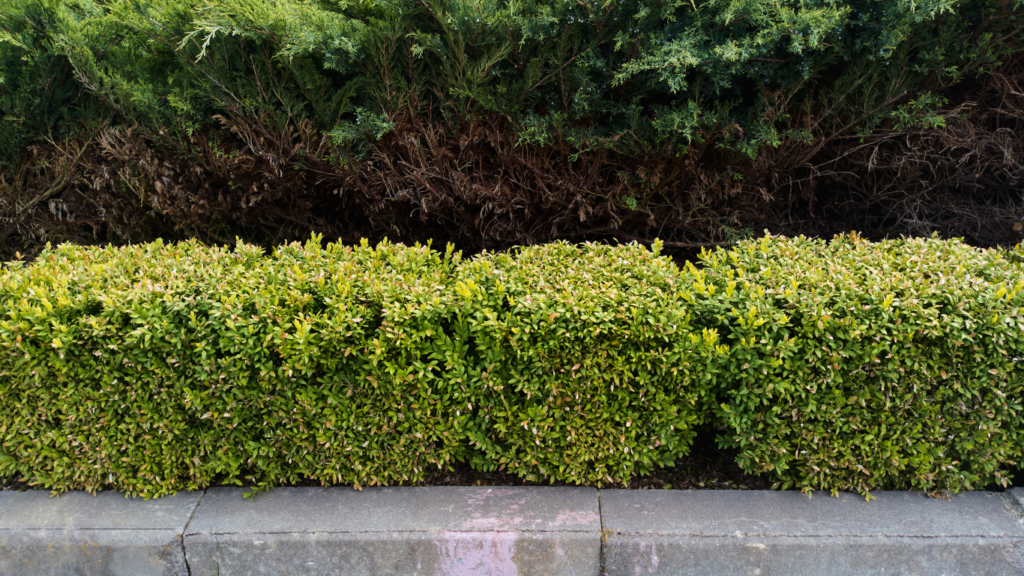Evergreen shrubs provide year-round structure and colour to the garden. Designers think of them as the backbone of a planting, providing form and interest even when the rest of the garden is dormant. In sunny gardens, it is easy to overlook evergreen foliage in favour of flowering perennials and deciduous shrubs. Of course, many evergreen shrubs also bloom. The following evergreen shrubs for sunny locations will help you create a garden that looks good no matter the time of year.
Types of Evergreen Shrubs
Evergreen plants are divided into two groups: broadleaf and narrowleaf evergreens. The term broadleaf evergreen is somewhat misleading, as it includes many evergreen shrubs with relatively small leaves such as boxwood. Rather, the term is used to differentiate broadleaf evergreens, which have relatively broad or wide leaves, from narrowleaf evergreens, which have needle- or scale-like foliage. Pines and arborvitae are examples of narrowleaf evergreens.

Broadleaf Evergreen Shrubs for Sunny Gardens
While many broadleaf evergreens require protection from winter sun, some thrive in full sun locations. The benefit of broadleaf evergreens is that many produce gorgeous flowers and fruit in addition to year-round foliage. Hollies, Ilex species, are favorite broadleaf evergreens planted for their shiny foliage and bright red berries. Not all hollies are evergreen, nor do they all produce red berries. For the classic holly look, try planting a blue holly, Ilex meserveae, or a hybrid such as Christmas Jewel holly, Ilex hybrid ‘HL10-90’.
Chief among flowering evergreens are the viburnums, which produce fragrant spring blooms followed by fall berries. Evergreen species include Burkwood viburnum, Viburnum x burkwoodii, of which the cultivar ‘Mohawk’ is exquisite, with intensely fragrant pink-white blooms and vibrant fall colour. Emerald Envy Viburnum, Viburnum x rhytidophylloides, has thick, deep green foliage covered in white blooms each spring.
On the west coast, ‘Victoria’ California lilac, Ceanothus thyrsiflorus, is beloved for its indigo blooms and deer resistance. Southern gardeners can include Chinese fringe flower, Loropetalum chinense and hybrids to sunny beds. While these plants produce interesting fringed, pink or white blooms, it is their foliage that truly shines. Varieties with purple, burgundy, green, or variegated foliage stand up to full sun in the hot and humid south.
For edging and defining space, you can’t go wrong with boxwood. Both common or English boxwood, Buxus sempervirens and littleleaf box, B. microphylla, thrive in full sun. Another foliage forward evergreen species to try is distylium, Distylium species and hybrids. Common in the Pacific northwest, these compact, heat and drought tolerant shrubs are gaining in popularity throughout southern and eastern gardens.

Narrowleaf Evergreen Shrubs for Sunny Locations
Narrowleaf evergreen shrubs have needle-like or scale-like leaves. These are the plants that we more readily associate with the word evergreen. The narrowleaf evergreens can be further divided into two classes: needleleaf and scale-leaf. The pine tree is a good example of a needleleaf evergreen. Trees and shrubs in this class bear branches that radiate from the trunk in whorls, like spokes from a hub. There is a length of bare trunk between the whorls, and the individual leaves tend to be pointy.
Many needle-leaf evergreens are adapted to full sun. For low-growing landscape shrubs, consider compact versions of pine, fir, and spruce. Growing just 2 feet tall and 3 feet wide, dwarf balsam fir, Abies balsamea ‘Nana’ grows as a mounded shrub. In larger spaces, try dwarf Norway spruce, Picea abies ‘Pumila’ or mugo pine, Pinus mugo var. pumilio.
Sun-loving yews, Taxus species and cultivars, are available in a variety of forms, including the low-growing Emerald Spreader Japanese yew, Taxus cuspidata ‘Monloo’ and the upright Hicks yew, Taxus x media. Also included among the needled evergreens are true cedars, Cedrus species, and Japanese cedar, Cryptomeria japonica. Japanese cedars tend to grow low and spreading or loosely mounding, while most true cedars are tree-sized plants. A few compact cedar varieties are available including Feelin’ Blue deodar cedar, Cedrus deodara, which grows 4 to 5 feet tall and 6 to 10 feet wide in 10 years.
Narrowleaf evergreen shrubs in the scale-leaf class include plants like arborvitae and juniper, which grow branches more irregularly, somewhat like deciduous plants. The foliage of these plants looks very different from needled evergreens. They are made up of flat structures that overlap like roof shingles. ‘Golden Globe’ arborvitae, Thuja occidentalis, is a popular mounded evergreen for adding bright colour to the garden. Narrow, columnar varieties such as North Pole arborvitae, Thuja occidentalis ‘Art Boe’, have expanded use of arborvitae into smaller gardens.
Low growing, spreading junipers, Juniperus species, have long been used to add mass and structure to sunny borders. Add a pop of color with blue forms such as Blue Star juniper, Juniperus squamata ‘Blue Star’ or the golden foliage of Sea of Gold juniper, Juniperus x pfitzeriana ‘Monsan’.
Another scale-leaf evergreen beloved for its golden-hued foliage is false-cypress, Chamaecyparis species. Newer cultivars such as Night Light Hinoki cypress, Chamaecyparis obtusa ‘Conschlecht’ are gaining in popularity against standards like Golden Mop threadleaf false cypress, Chamaecyparis pisifera ‘Golden Mop’.
Evergreens are hard-working plants. Not only does their foliage add interest all year long, but their dense canopies provide shelter and nesting sites for birds. An evergreen’s sheltering branches can also be used to create privacy in the backyard or protection from cold winter winds. Adding evergreens to sunny beds will certainly transform your gardens.
